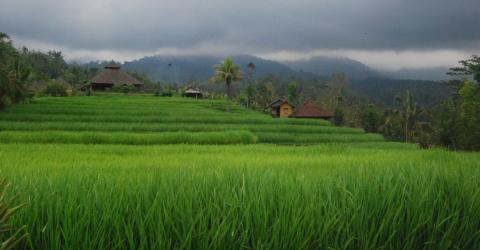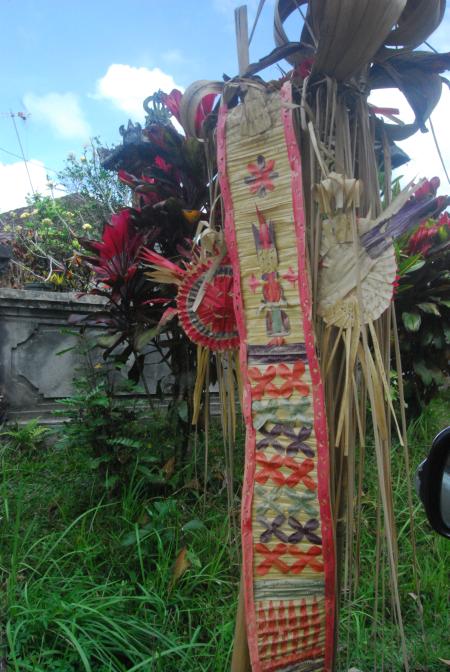
Bali’s Wetland Rice Terraces; Are they real without words to describe them?
‘Subak’ is a system for growing rice that developed on the island of Bali (Indonesia) over 800 years ago. Water is gathered and distributed to the terraced rice fields; committees of farmers manage the water and the land, bringing members together to make decisions and work communally; and a network of shrines and temples spanning the island and extending to every corner of the rice terraces controls ceremonies, rituals and offerings. Together these elements comprise Subak and together they produce a thing of beauty, diversity and richness that seamlessly integrates the natural and the human, while also producing rice efficiently and sustainably.
Subak is under threat, its features being eroded by economic development, social change, immigration and tourism. Cultural integrity remains strong, as can be seen everywhere across the island in the innumerable daily offerings of flowers and rice, scattered across every pavement, shop front and shrine, or more substantial offerings of flowers and fruit. Subak, at the centre of this, represents, demonstrates and embodies the Balinese Tri Hita Karana philosophy of balance between people, nature and god. In 2012, five key locations for Subak were declared a World Heritage Site with the specific intention of recognizing and protecting the Tri Hita Karana philosophy.
Research carried out by the organisations Yayasan Somya Pertiwi and Fauna & Flora International in 2014 found that language associated with Subak is being lost. Using interviews and group discussions, researchers recorded 37 words for tools or materials related to rice production. Tempeh is a tool used to ensure that traditional red rice seedlings are planted with the correct spacing, but it is not used with the new rice varieties. Uga, samad and kunali all refer to ploughing with oxen or water buffalo, a method which has almost entirely given way to the use of tractors. Rice was transported from the field in sanan – a basket - but no longer. Mebleseng is the word for farmers carrying rice to the granary together, but most rice today is sold in the field and removed by the buyers in trucks. Knowledge of these words is declining as the younger generation abandons farming. At least twelve ceremonies are associated with the annual cycle of rice production. Though knowledge of these remains high, it is declining, and the ceremonies themselves are changing. The magpag toyo ceremony to ask the gods for good rains may persist, but what of mantenin, the ceremony carried out after the rice has been stored in the granary, if such storage no longer happens?
Changes in the technology and economics of rice farming mean that certain tools and practices are no longer used, and the language of Subak is being lost. Soon, perhaps, just the sunari, a wind-driven ‘bird-scarer’ whose mellifluous tone typifies the tranquillity of the landscape will remain. Without the words that describe the activities and practices particular to Subak, the names of tools developed over centuries, the ceremonies, and the songs sung during planting or harvesting or to celebrate the insects and birds that are part of Subak, can we say that Subak will still exist? And without Subak, tri hita karana may fail with profound consequences for what it means to be Balinese, as well as significant changes to the way the landscape is used, how it looks and how rice is produced.
By Dr Mark Infield
Technical Advisor, Ministry of Water and Environment
Photo credits: Bali Rice Terraces, M.Infield
